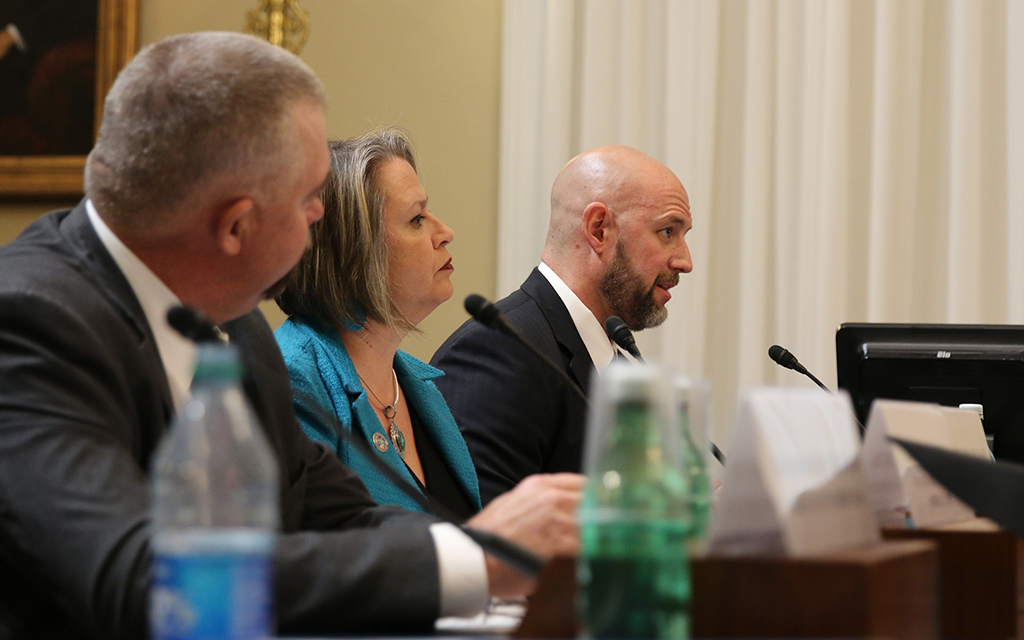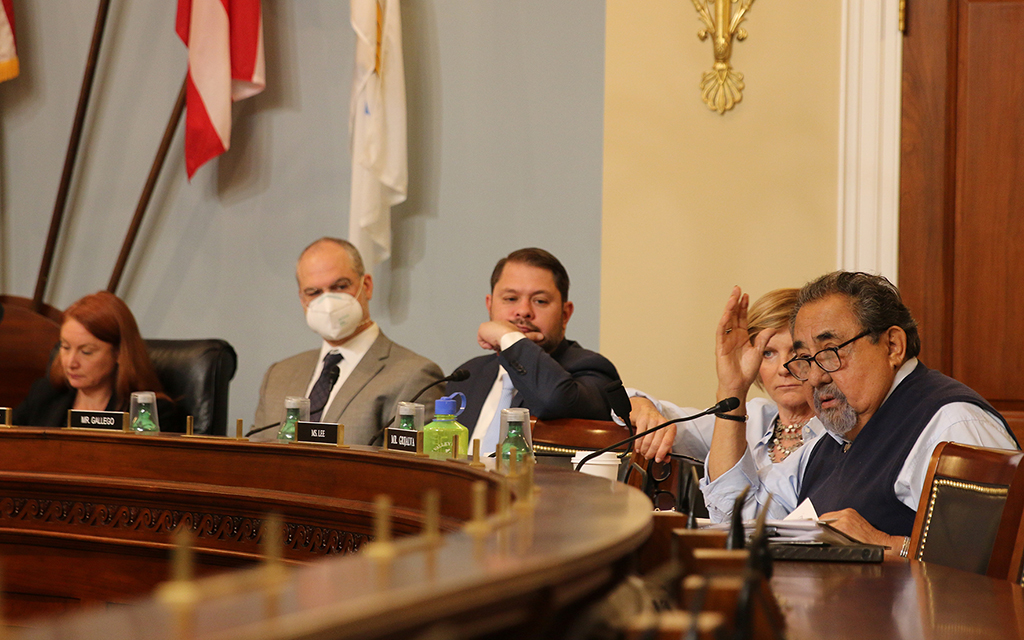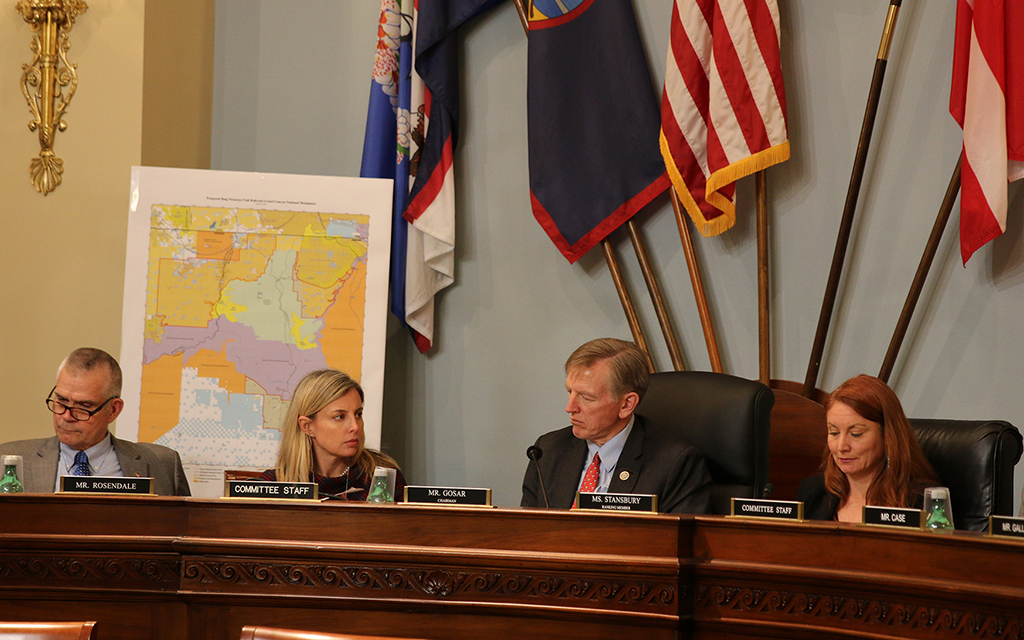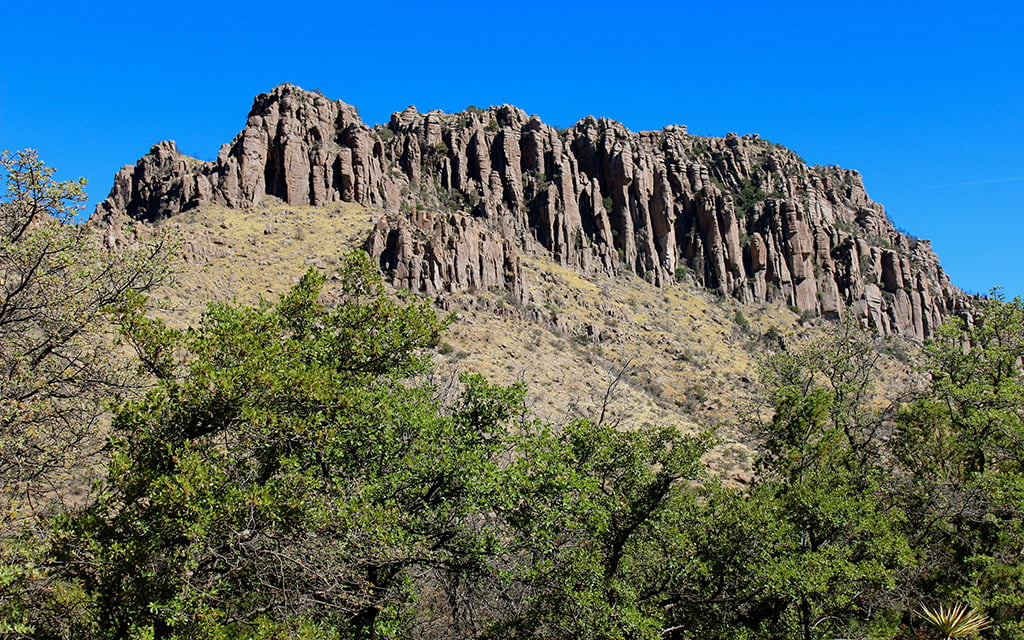
Mohave County Supervisor Travis Lingenfelter, right, told a House subcommittee that proposed expansions of national monuments could harm the region’s economy, leaving what he called “poverty with a view.” (Photo by Liam Coates/Cronkite News)

Rep. Raul Grijalva, D-Tucson, questions witnesses at a House Natural Resources subcommittee hearing on the impact of proposed expansions of national monuments in southern Nevada and northern Arizona. Rep. Ruben Gallego, D-Phoenix, also attended the hearing. (Photo by Liam Coates/Cronkite News)
WASHINGTON – A Mohave County supervisor said Wednesday that a proposed new national monument in northern Arizona would “devastate the economic growth potential” of the region, leaving little more than what he called “poverty with a view.”
“Is forever locking down known American natural resources really the wisest course of action to take when faced with an uncertain future with international players like China and Russia?” Mohave Supervisor Travis Lingenfelter asked during his testimony to a House Natural Resources subcommittee.
But advocates said national monuments not only protect important environmental and archeological sites, but they can generate business for the regions where they are situated.
New Mexico Public Lands Commissioner Stephanie Garcia Richards told the panel that in her experience, the designation of a national monument represents an “infusion of life” into the economy that “relies on the monument for that visitation and those tax dollars.”
Their comments came during an Oversight and Investigations Subcommittee hearing on the Biden administration’s “efforts to limit access to public lands.”
President Joe Biden in March ordered the creation of a new 506,814-acre national monument in southern Nevada. The Avi Kwa Ame, or Spirit Mountain, area was set aside for archeological and environmental protection and to preserve lands that are considered sacred by 12 tribes in the region.
The monument was created under the Antiquities Act of 1906, a law that allows the president to protect lands with significant archaeological, marine, cultural, environmental or geological significance. The use of the act to creates such monuments is often controversial because it allows the president to act unilaterally.
In April, environmentalists and tribal leaders called on Biden to use the act again, this time to preserve more than 1.1 million acres in northern Arizona. The proposed Baaj Nwaavjo I’tah Kukveni National Monument would surround the Grand Canyon. Advocates say the new monument is needed to protect the Grand Canyon from the pollution that they say accompanies uranium mining.
Rep. Raúl Grijalva, D-Tucson, who supports the creation of the new Arizona monument said the buffer is about creating “landscape balance” between “the extractive industries, fossil fuel, mining, that have had the upper hand on decisions that are made around BLM (Bureau of Land Management) and the usage of its land. It’s a necessary balance.”
Grijalva said at Wednesday’s hearing that the Baaj Nwaavjo I’tah Kukveni proposal is a “direct by-product of the toxic legacy that uranium mining inflicted on those areas,” leading to “contaminated water, land, health impacts” and illness.
But Lingenfelter said designating a new monument is not needed when the government has other tools in its toolbox to prevent mining in northern Arizona.

Rep. Paul Gosar, R-Bullhead City, at a House subcommittee hearing on proposed national monuments in southern Nevada and northern Arizona, including 1 million acres around the Grand Canyon, shown on the map behind him. (Photo by Liam Coates/Cronkite News)
“If the federal government is looking to prevent uranium mining, it does not require a new national monument designation to deny permits. As we believe, the federal government already has that authority.”
Rep. Paul Gosar, R-Bullhead City, said it is the duty of the House to stop the federal government, which is “looking for ways to slowly restrict access to our lands.”
“It is a bit like the old frog in a pot of boiling water. At first, he is just sitting in cold water.” said Gosar, chairman of the subcommittee. “Nothing to see here. Just small monument designations.
“Before you know it the frog is boiling and Americans have lost access to nearly all federal lands for permitted activities, like hunting, grazing, snowmobiling, timber harvesting, mining and oil and gas leasing,” he said.
Lingenfelter noted that Arizona already has 18 national monuments, which he said is the most of any state in the country. Many sites that began as national monuments have also progressed to national parks with congressional legislation, like the Grand Canyon and Zion.
Adding another monument will do more harm than good in communities like Colorado City, Centennial Park and Cane Beds, he said.
“Communities will be harmed by the unintended consequences of designating yet another national monument right in their backyard,” Lingenfelter told the subcommittee.

